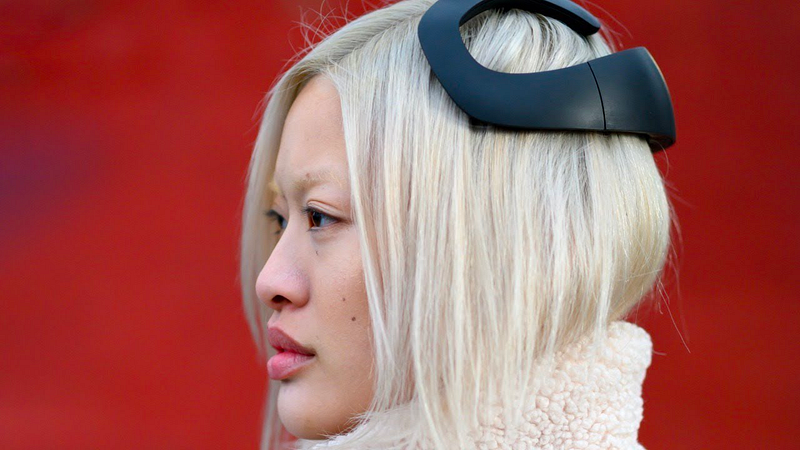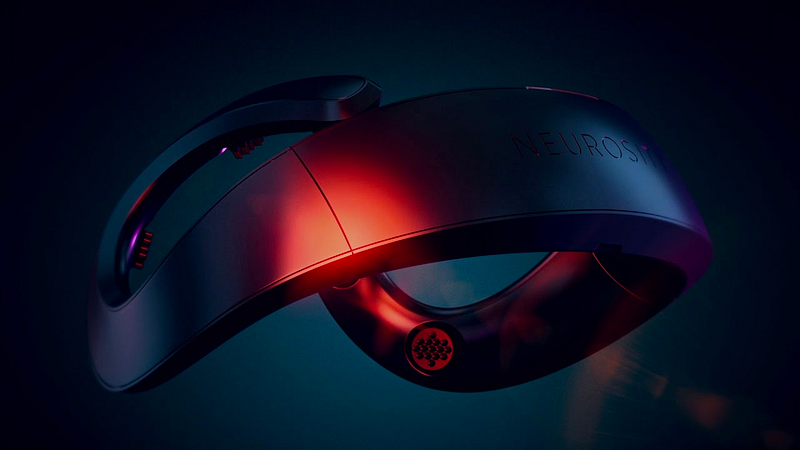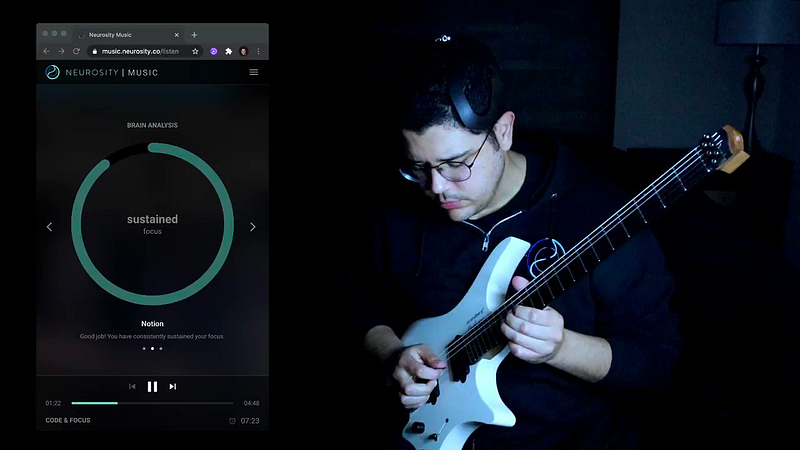Staying focused on focus: Creating brain-computer interfaces with AJ Keller

Informal client AJ Keller recently spoke at our quarterly Informal Talks series about his company, Neurosity, and their product–a brainwave measuring headset called, The Crown that helps keep its wearer focused. We work with some pretty phenomenal innovators, but this project may take the cake for the most futuristic product that we’ve worked on.
While working as a robotic engineer at Boeing, AJ kept coming back to the idea of how different the factory floor would be if humans could control robots by thinking. The robots he was working with were massive and dangerous, but AJ was interested in the idea of a collaborative robot that could recognize a collision with a human. The way people at Boeing were interacting with robots was still very archaic, and he knew if users could share a thought with a robot the world of manufacturing would be completely different.
AJ left his job at Boeing in 2015 to pursue his app development company, Push The World. He wanted to create technology that really advanced the state of the world, and apps were a way to get involved without much equipment. That’s where he first got involved with Open BCI–he built an early driver for them that connected a web browser to a brain interface. Eventually, this landed him a part time job at Open BCI. When not working there, AJ was making strides with his own project that involved pulling a single thought out of the brain and putting it into action.
While on the hunt for a business partner to expand upon his idea, AJ was approached by Alex Castillo, who was working at Netflix. Alex pitched AJ an idea called Neurosity, a company with a goal that aligned with what AJ had been working on himself. The duo took two months to figure out if they could realistically make this company work. They asked every hard question that they could think of — who would be responsible for the hardware? Who would be in charge of the software? The finances? The FDA? They wanted the heart of their company to be all about the wonders of our brains and how to unlock their potential. Their mission and vision began to take shape — they wanted to build the best brain computer and neuro apps in the world, while also being the most trusted and loved neuro technology company. Once these core components were settled, the pair felt ready to jump in.
With a clear target of building the most powerful brain computer on the market, AJ described that they ran into a “lighthouse problem.” When you are in a lighthouse, there are infinite directions that you can see and investigate. The challenge is choosing the right one. For Neurosity, they considered dozens of different applications, not all of which were worth the time or precious resources only sparingly available to early stage startups. So AJ and Alex decided to stay hyper focused on, well, focus. They worked to create a brain computer that could help developers keep focused while working.
The pair then needed a design to house their brain computer, one that people would actually want to wear. They thought about hiding their technology in a baseball cap, but decided they needed a more rigid enclosure. Alex and AJ wanted something striking, something that would catch an eye and be an object of curiosity and desire.
While at dinner one evening, Alex saw a ram’s head and horns and was struck with the idea to create a design inspired by this shape. He mocked up a prototype that would go on to become the final design for the Crown. In keeping with Neurosity’s goal to be a brain centric company, creating hardware for your brain meant that it was okay if it looked like hardware for your brain. Rather than trying to disguise the tech within a hat, this new design shamelessly looked like a brain-monitoring device. In its final form, the Crown is a sleek and simple wearable that sits on the back of your head, with a signature ram’s horn shaped curve on either side.

So, how does the Crown actually work? It starts by reading brain waves and electrical activity through electrodes on the wearer’s scalp. It takes this data and helps the user understand their level of focus during a task through hundreds of data points per second. The Crown reads brainwaves from the frontal lobe and plots oscillations, allowing the EEG sensors to capture detailed data and indicate accurately if a user is focused, calm, and relaxed. It can also provide feedback on your state of mind while you work, so you can see what is distracting you. By using eight tiny EEG sensors it is able to measure changes within the brain’s visual cortex — the part of the brain that processes visual information, indicating whether the user is retaining focus.
One of the most exciting things about the Crown is the open API available to developers. Developers have figured out how to make the Crown do some creative things–from swiping on Tinder, to tracking your focus while learning or playing guitar. You can even use it to Rick Roll yourself if you ever focus too hard.

When asked about the future of the Crown, AJ shared that he is already planning two steps ahead. Crown 2 should be debuting in 2023, and Crown 3 will hopefully come out the following year.
With these new versions, AJ was clear that Neurosity still fully stands behind the original Crown, but noted that there are areas where the company wants to improve, particularly inclusivity. Neurosity’s goal is to create a headpiece that works for all and they’ve been working to make the Crown fit up to 95% of the global population, no matter the head size or hair length.
Although we may not have telekinetic powers yet, Neurosity is paving the way for us to super charge our brains with technology. If you want to experiment for yourself, you can find the Crown on Neurosity’s website.